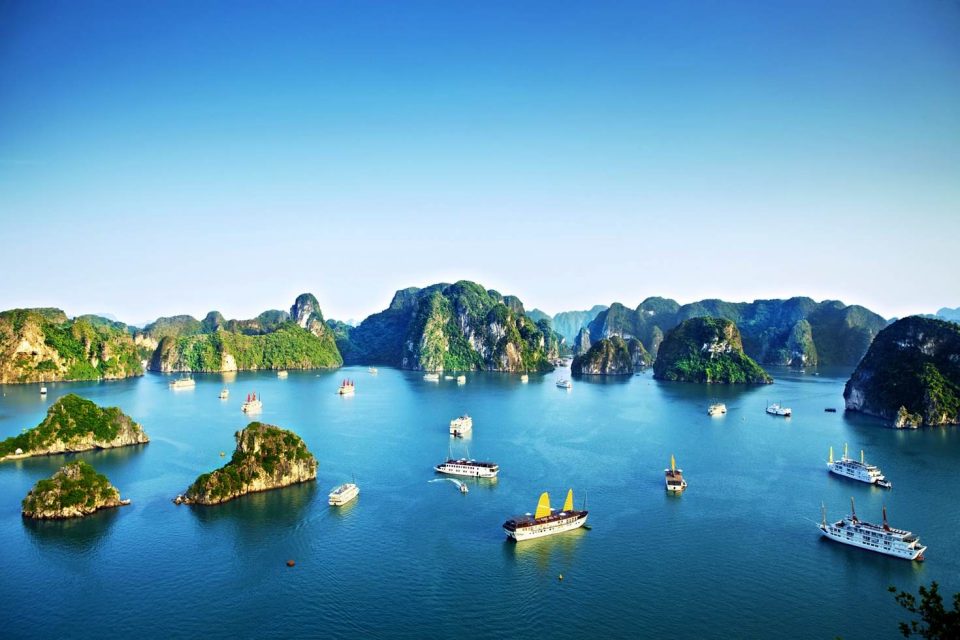Halong Bay is not only a UNESCO World Heritage Site in Vietnam but also one of the New Seven World Natural Wonders. With many landscapes, diverse and rich flora and fauna with great archaeological and geological significance. It has landmarks attached to the historical and cultural values and is close to the international gateway. Halong Bay is considered as one of Vietnam’s most famous places for foreign visitors.
Ha Long Bay is a popular travel destination in Quang Ninh Province, Vietnam. The name Ha Long (Hạ Long in Vietnamese) means “descending dragon”. Administratively, the bay belongs to Ha Long city, Cam Pha city, and is a part of Van Don District. The bay features thousands of limestone karsts and isles in various shapes and sizes. Ha Long Bay is a center of a larger zone which includes Bai Tu Long Bay to the northeast, and Cat Ba Island to the southwest. These larger zones share a similar geological, geographical, geomorphological, climate, and cultural characters.
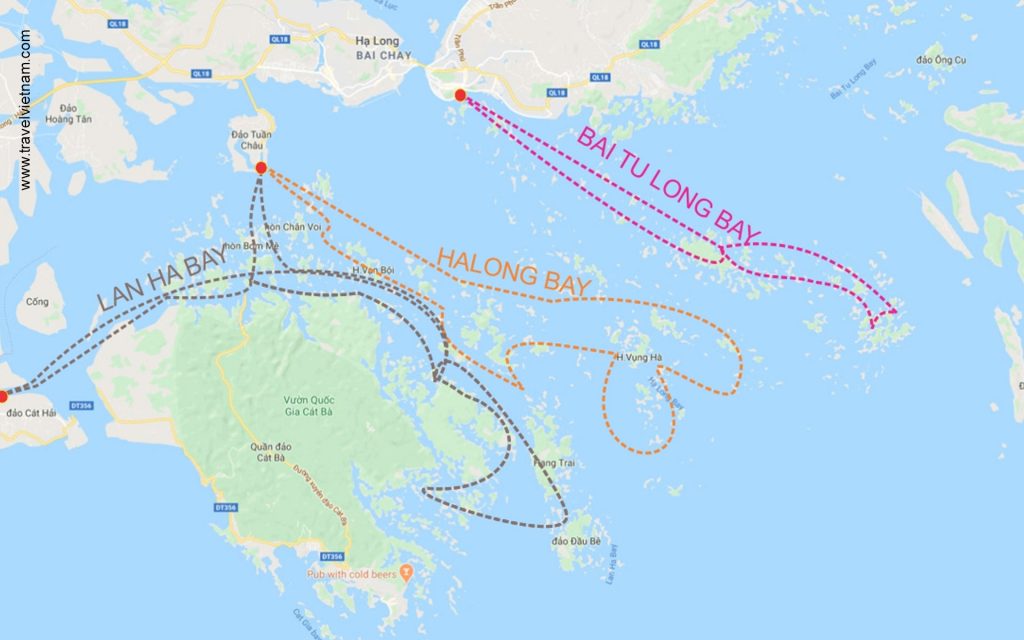
Ha Long Bay has an area of around 1,553 km2 (600 sq mi), including 1,960–2,000 islets, most of which are limestone. The core of the bay has an area of 334 km2 (129 sq mi) with a high density of 775 islets. The limestone in this bay has gone through 500 million years of formation in different conditions and environments. The evolution of the karst in this bay has taken 20 million years under the impact of the tropical wet climate. The geo-diversity of the environment in the area has created biodiversity, including a tropical evergreen biosystem, oceanic and sea shore biosystem. Ha Long Bay is home to 14 endemic floral species and 60 endemic faunal species.
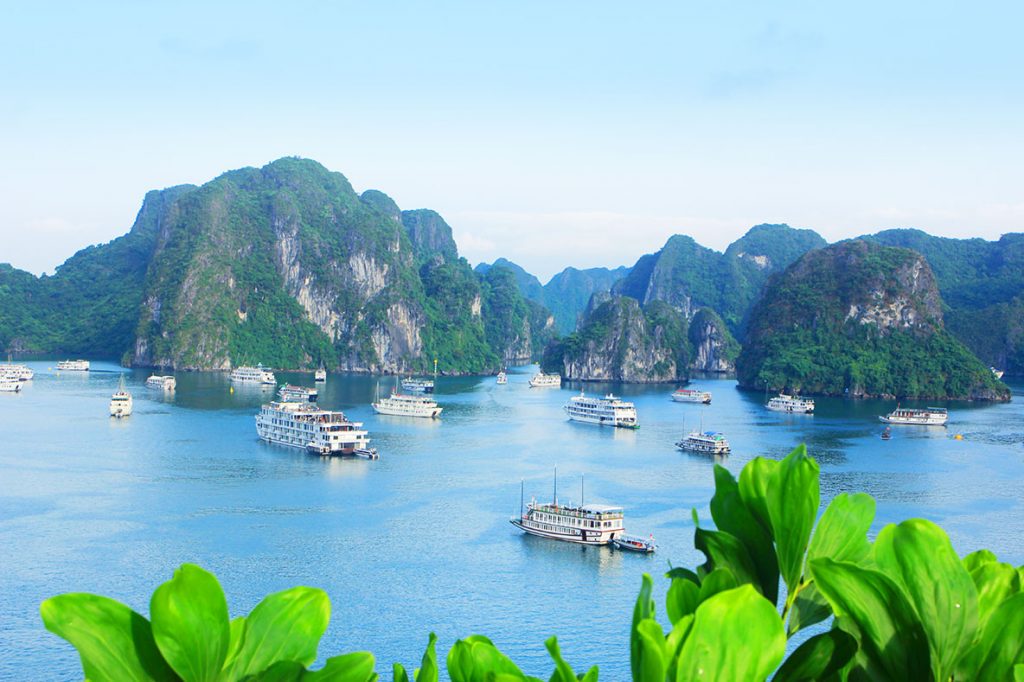
A community of around 1,600 people live on Ha Long Bay in four fishing villages: Cua Van, Ba Hang, Cong Tau and Vong Vieng in Hung Thang ward, Ha Long city. They live on floating houses and are sustained through fishing and marine aquaculture (cultivating marine biota), plying the shallow waters for 200 species of fish and 450 different kinds of mollusks. Many of the islands have acquired their names as a result of interpretation of their unusual shapes. Such names include Voi Islet (elephant), Ga Choi Islet (fighting cock), Khi Islet (monkey), and Mai Nha Islet (roof). 989 of the islands have been given names. Birds and animals including bantams, antelopes, monkeys, and lizard also live on some of the islands.
Floating fishing village
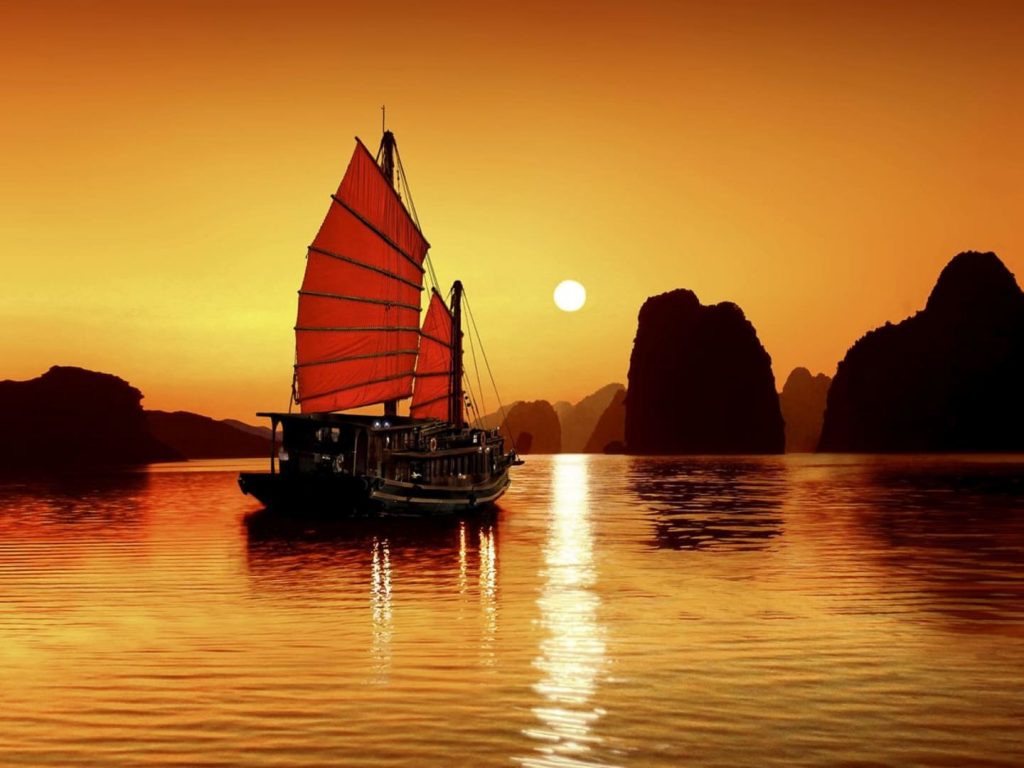
Almost all these islands are as individual towers in a classic fenglin landscape with heights from 50–100 metres (160–330 ft), and height/width ratios of up to about six.
Another specific feature of Ha Long Bay is the abundance of lakes inside the limestone islands. For example, Dau Be island has six enclosed lakes. All these island lakes occupy drowned dolines within fengcong karst.
But few people know that Halong Bay Complex includes three bays: Halong Bay (the main part), Bai Tu Long Bay (an off-the-beaten-track destination) and Lan Ha Bay (kayaking paradise). We hope this article offers useful information for those looking for a holiday to Halong Bay but still wonder about the names of Halong Bay, Bai Tu Long Bay and Lan Ha Bay.
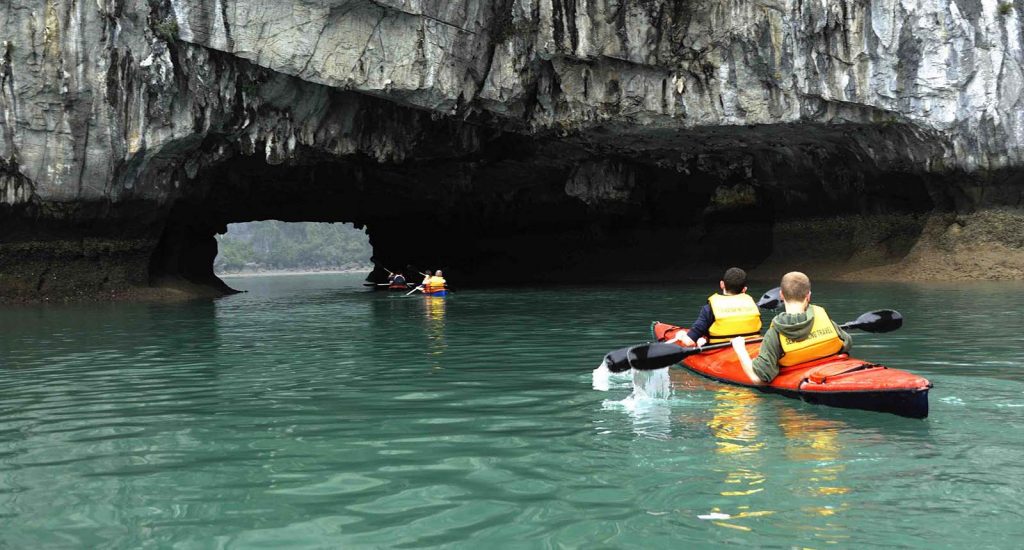
The best way to explore the entire Ha Long Bay, Bai Tu Long Bay or Lan Ha Bay is to spend your time on an overnight cruise sailing through green islets. On a traditional wooden junk or a modern cruise ship, visitors can enjoy the enchanting natural scenery from the balcony, terrace or the sun deck. Admiring the sunrise and sunset which cover the bay with an impressive pink and orange color, enjoying the fresh air that makes your mind absolutely relax.

